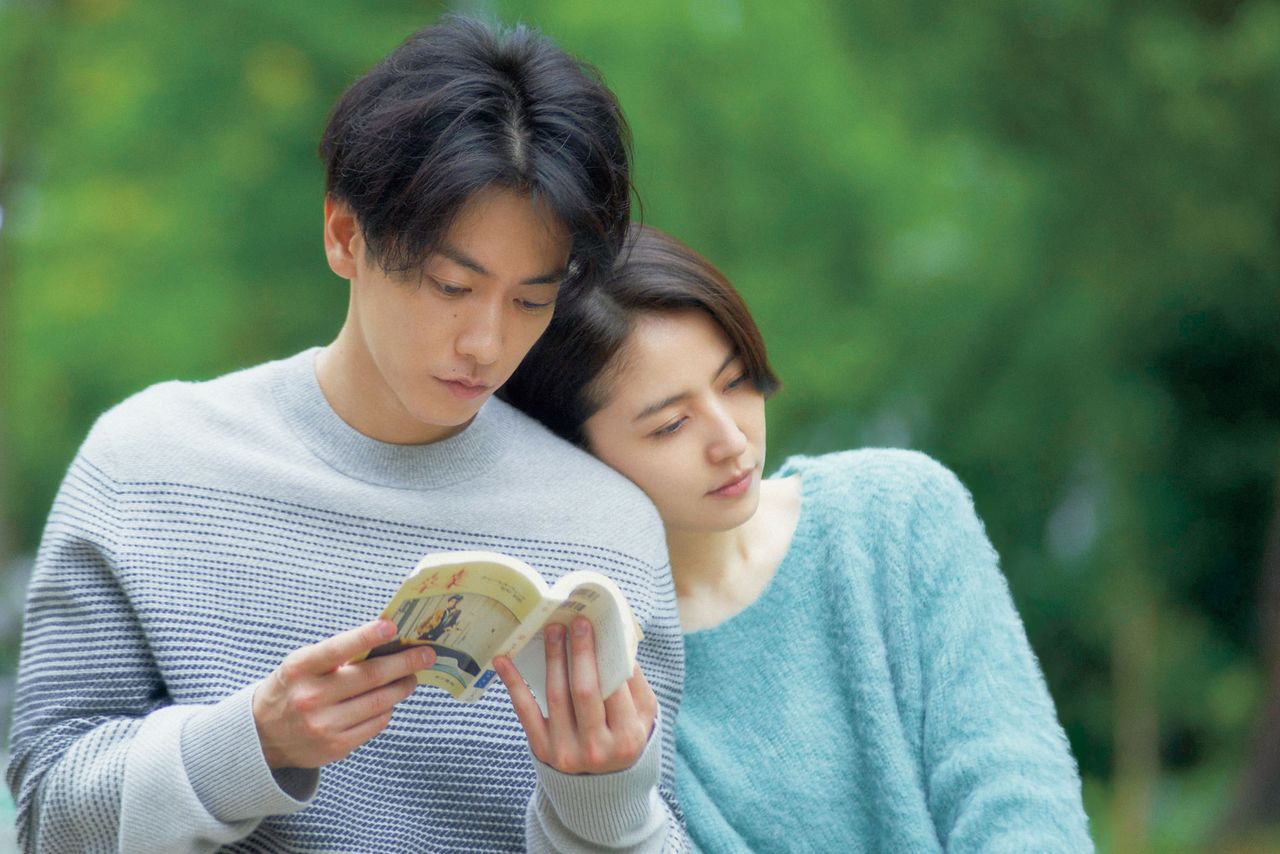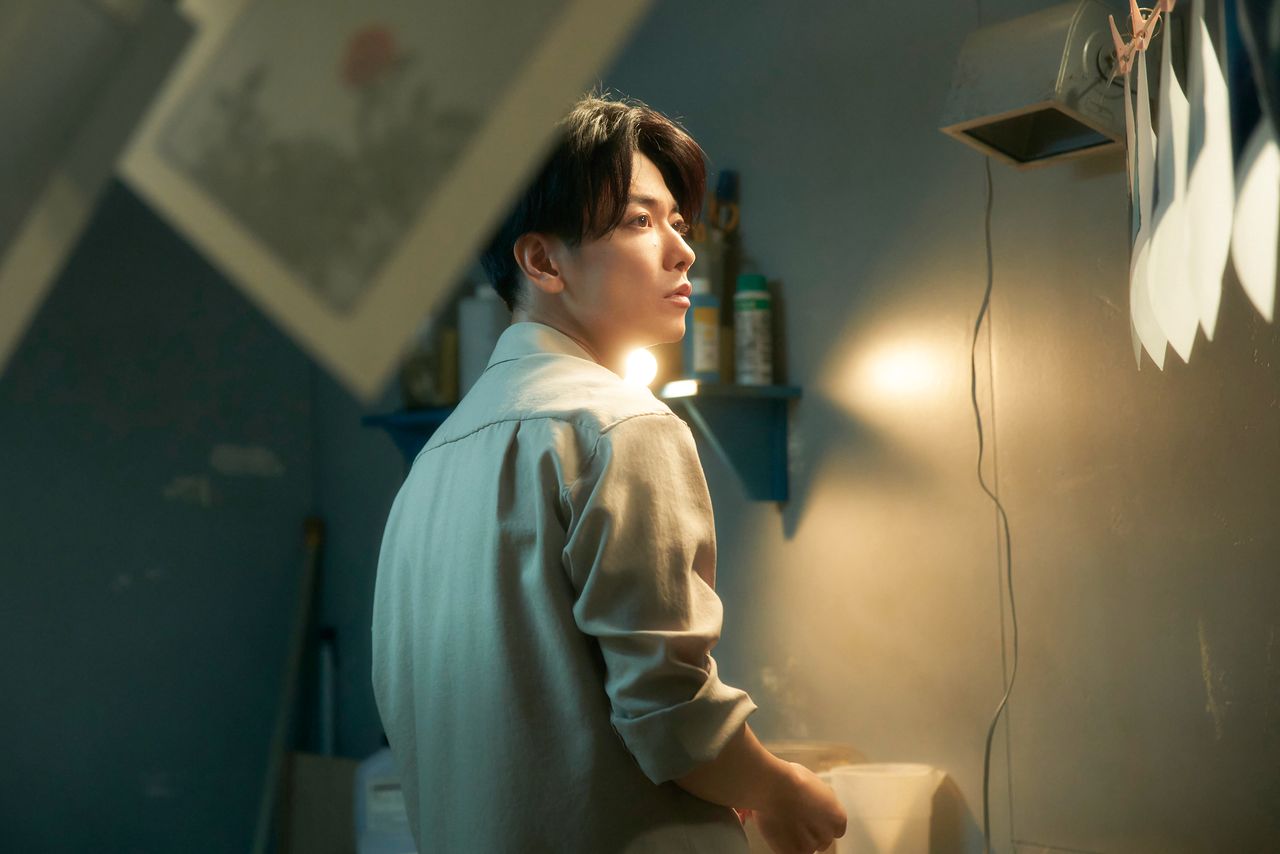
“April, Come She Will”: A Tale of Lost Love for the Post-Romance Age
Cinema- English
- 日本語
- 简体字
- 繁體字
- Français
- Español
- العربية
- Русский
The film Shigatsu ni nareba Kanojo wa (April, Come She Will) by Yamada Tomokazu is a romantic drama set in an age of growing indifference to love and relationships. In it, psychiatrist Fujishiro Shun, played by Satō Takeru, receives a letter out of the blue from Iyoda Haru (Mori Nana), his college love of 10 years earlier. “At that time, I had someone who was more important than me,” Haru writes. “I believed it would last forever.” The two had been members of their university photography club, and Haru, who has been traveling the world taking photos, reaches out to Shun while at Salar de Uyuni, the world’s largest salt flat, in Bolivia.
Shun, meanwhile, is engaged to Sakamoto Yayoi (Nagasawa Masami), a veterinarian at a zoo. The two are preparing for their upcoming wedding, but their interactions suggest that the relationship has cooled. One night Yayoi asks, “How do you keep love from ending?”
The next morning, Shun calls Yayoi to breakfast, only to discover that she is gone. Clueless as to the reason for her disappearance, he begins searching for her, recalling as he does times with his first love, Haru. Hanging in the air is the question: Why does love suddenly end when it is supposed to last forever?

Shun and Haru in their carefree college days 10 years earlier. (© 2024 Shigatsu ni nareba kanojo wa Production Committee)
The movie is based on a 2016 novel by Kawamura Genki, who has also made a name for himself in cinema working on such hit films as Koreeda Hirokazu’s Monster (2023), Rasuto retā (Last Letter) (2020), and Kiseijū (Parasyte) 1 & 2 (2014-15). As a novelist, he is perhaps best-known for Sekai kara neko ga kietanara (trans. by Eric Selland as If Cats Disappeared from the World), Oku otoko (Million Dollar Man), and Hyakka (A Hundred Flowers), which he adapted for the cinema in 2022.

Shun’s fiancée Yayoi was previously engaged. (© 2024 Shigatsu ni nareba kanojo wa Production Committee)
Skillful and Bold
The involvement of Kawamura in the screenwriting was central to the adaptation of the work. Changes were made to both the overall story structure and the characters to create a more obvious love story involving Shun, Yayoi, and Haru. The mystery surrounding Yayoi’s disappearance and Haru’s letter was also given more prominence.
The movie makes strong use of visuals to develop the plot. The opening scene, for instance, shows a car, in which Haru is a passenger, driving across the Uyuni salt flat, with a voiceover of her reading her letter to Shun. This is followed by the contrasting scene of Shun and Yayoi inspecting their wedding venue and returning home to their peaceful, albeit tepid, domestic life.

The movie features spectacular scenery, including Uyuni. (© 2024 Shigatsu ni nareba kanojo wa Production Committee)

Haru on the coast of Iceland. (© 2024 Shigatsu ni nareba kanojo wa Production Committee)
“After two years of married life, love fades to affection.” Yayoi’s words allude to the reality of her daily life with Shun, who religiously toasts two slices of bread each morning for his fiancée, but remains emotionally distant.
In the every-day circumstances depicted in the film, director Yamada asks, “Where did love go?” Cinematographer Imamura helps set the plaintive mood with his vivid shots of majestic natural scenery and subtle changes in expression, using his artistic skills and lighting to create momentary sketches.
The film’s dialogue seems to play a secondary role. There are blatant proclamations of love, but more poignant are the unspoken words in the shared glances of characters, the very air between them becoming a medium more eloquent than words.

Shun reads The Graduate by Charles Webb, which was adapted for screen in the 1967 movie starring Dustin Hoffman. (©2024 Shigatsu ni nareba kanojo wa Production Committee)
Emotional Emptiness
The story is a complex interpolation of four timelines: Shun’s present, his past with his fiancée Yayoi, his first love Haru, and her letter from far away. Those around Shun are often clueless as to what he is thinking. Satō Takeru, who plays Shun, gives a forceful portrayal of profound emptiness.
Following Yayoi’s disappearance, Shun visits her sister Jun (Kawai Yūmi), and drowns his sorrows at the bar of his friend Tasuku (Nakano Taiga). Both Jun and Tasuku rebuke Shun, but with seemingly little impact. Shun’s words themselves seem to have lost any genuine meaning.
Yamada focuses attention on the outpouring of emotion from the apparent void within Shun. Film-making is a fusion of action and emotion, seen in the long shot of Shun and Haru walking together to view a sunrise, contrasted with a scene of Shun running, as if his life depended on it. The movie’s title song, Michi Teyu Ku (Overflowing), by Fujii Kaze, provides an emotional backing to Shun’s emptiness in the film’s most dramatic

Shun makes a surprising discovery when developing photos in the darkroom. (© 2024 Shigatsu ni nareba kanojo wa Production Committee)
Special mention should be made of Haru’s father, a character who is not in the original novel. He appears only briefly, but his portrayal by Takenouchi Yutaka provides a counterpart to Shun’s loneliness and emptiness. He begs the question, “What can fill that void?”
The story delivers stone-cold realizations about relationships, but in the end it proves itself to be a tale of intensely passionate love.

(© 2024 Shigatsu ni nareba kanojo wa Production Committee)
Trailer (Japanese)
(Originally published in Japanese. Banner photo: © 2024 Shigatsu ni nareba kanojo wa Production Committee.)
